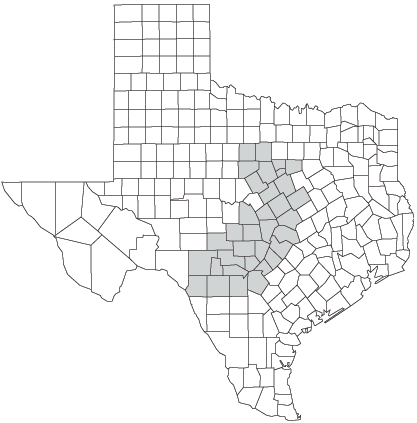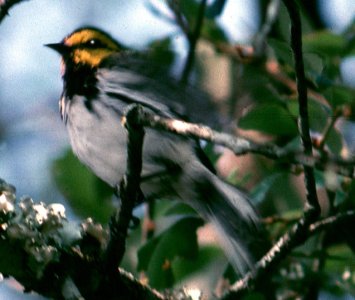Golden-cheeked Warbler (Setophaga chrysoparia)
- Texas Status
- Endangered
- U.S. Status
- Endangered, Listed 5/04/1990
- Description
- Adult Golden-cheeked warblers reach a length of 4.5 inches.
- Life History
- Golden-cheeked warblers nest only in central Texas mixed Ashe-juniper and oak woodlands in ravines and canyons. Warblers eat insects and spiders found on the leaves and bark of oaks and other trees. They use long strips of cedar bark and spider webs to build their nests. They come to Texas in March to nest and raise their young, and leave in July to spend the winter in Mexico and Central America. Females lay 3-4 eggs during nesting season. Of the nearly 360 bird species that breed in Texas, the Golden-cheeked Warbler is the only one that nests exclusively in Texas.
- Habitat
- Woodlands with tall Ashe juniper (colloquially "cedar"), oaks, and other hardwood trees provide habitat for the golden-cheeked warbler.
- Distribution
 In Texas, golden-cheeked warblers are found in the Edwards Plateau and locally north to Palo Pinto County.
In Texas, golden-cheeked warblers are found in the Edwards Plateau and locally north to Palo Pinto County.- Other
- Golden-cheeked warblers are endangered because many tall juniper and oak woodlands have been cleared to build houses, roads, and stores. Some habitat was cleared to grow crops or grass for livestock. Other habitat areas were flooded when large lakes were built.
